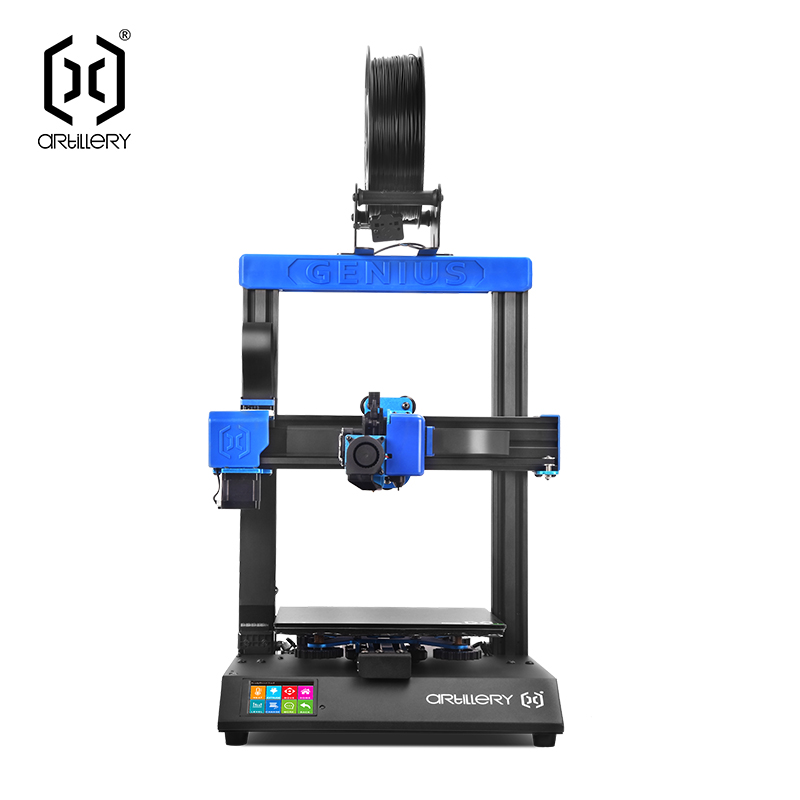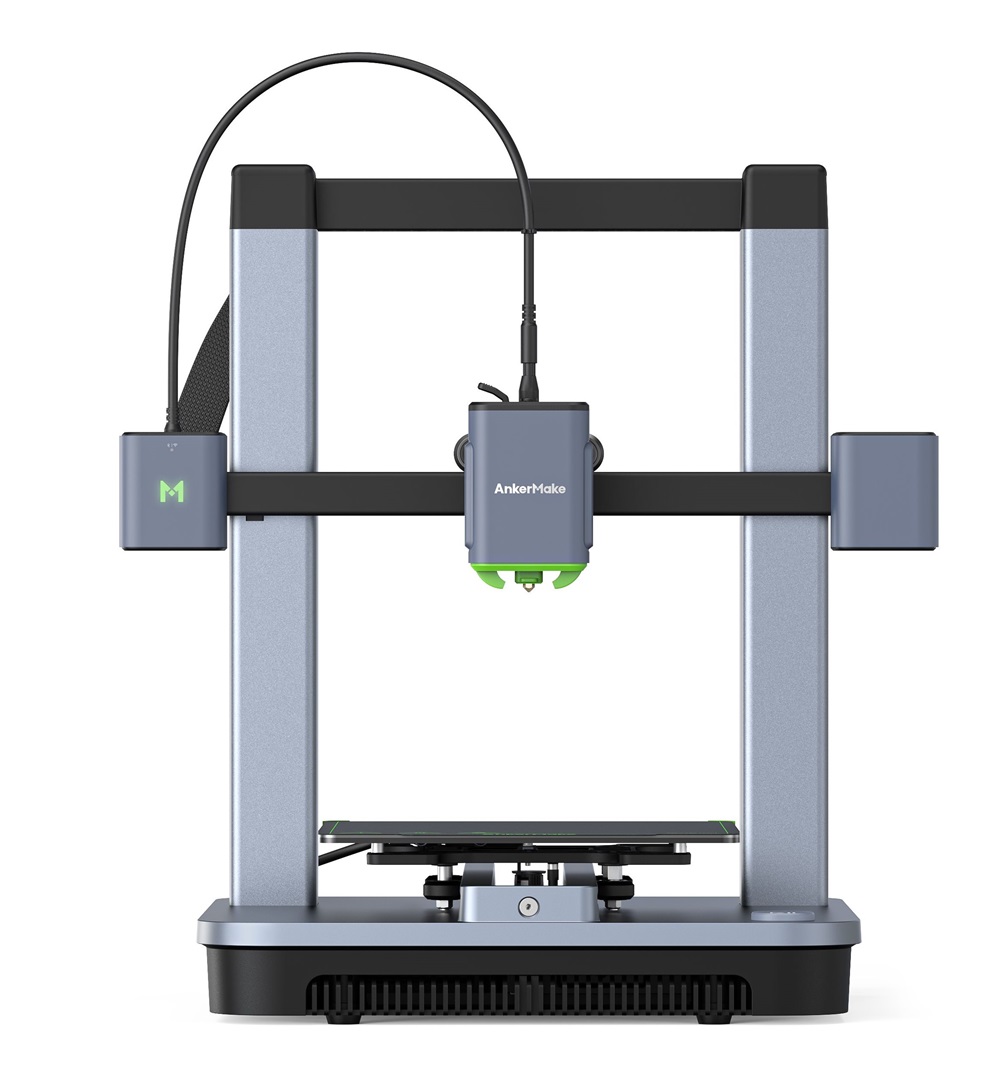Compare Genius Pro vs M5C
Comparison between the best 3D printers
Choose the best 3D printer at the best price. The cheapest 3D printers are here.
Buy a 3D printer here with 3D Fila.
 |
 |
|
| Model | Genius Pro[BUY Genius Pro] |
M5C[BUY M5C] |
| Printing Material | Filament | Filament |
| Buy Filament for Artillery Genius Pro | Buy Filament forAnkerMake M5C | |
| Estimated price | $309,00 | $399,00 |
| Manufacturer | Artillery | AnkerMake |
| Release Year | 2022 | 2023 |
| Print Volume [mm] | 220x220x250 | 220x220x250 |
| Printer Size [mm] | 430x390x590 | 466x374x480 |
| Weight [kg] | 9,6 | 9,6 |
| Power Loss Recovery | YES | YES |
| Enclosed printer | NO | NO |
| Bed Leveling | Automatic | Automatic |
| Filament End Sensor | YES | YES |
| Bed type | Heated | Heated |
| Power supply system | Direct Drive | Direct Drive |
| Standard nozzle | 0,4 | 0,4 |
| Maximum Nozzle Temperature [°C] | 240 | 300 |
| Maximum Bed Temperature [°C] | 120 | 100 |
| Maximum printing speed [mm/s] | 150 | 500 |
| Filament holder | YES | YES |
| Camera for supervision | NO | NO |
| Recommended filaments | PLA, PETG, Tritan, Flex, ABS | PLA, PETG, TPU, ABS, PA, PLA-CF, PETG-CF, PA-CF |
| Recommended slicers | Cura, Simplify, Slic3r, IdeaMaker | AnkerMake Studio (macOS, Windows), Simplify3D, Ultimaker Cura, PrusaSlicer |
| Maximum Resolution [mm] | 0,1 | 0,1 |
| Processor | Ruby 32bit | |
| Display | Touchscreen TFT 3,5'' | |
| Power Supply | 350 W | |
| Connectivity | SD / USB | Wi-Fi, USB-C, Bluetooth |
| Operating systems | Windows, Mac, Linux | Windows, Linux e Macbook |
| Date of registration in the system | 2022-11-07 | 2024-09-11 |
| Release date | 2022 | 2023 |
| Extra features | The Artillery Genius Pro is a standout 3D printer with a fast-heating AC tempered glass print bed and a sleek design with a black aluminum base and blue accents. It features a Titan-style direct extruder and a 32-bit Ruby mainboard. Despite its advanced feature set, it struggles to maintain print quality, requiring frequent adjustments and calibrations, and its glued glass bed makes cleaning and replacement difficult. | The AnkerMake M5 printer stands out for its impressive print speed, reaching up to 500mm/s. It features AI print monitoring, an integrated camera for creating timelapses, auto-leveling bed with pressure sensor, direct extruder, flexible PEI-coated build plate, and Wi-Fi and USB-C connectivity. Assembly is quick and easy, and the printer is designed to deliver high print quality and ease of use. |
| Support for multiple colors and materials (AMS and CFS) | NO | NO |
Notes * |
||
| Cost-benefit | 7 / 10 | 7 / 10 |
| Hardware | 2.8 / 10 | 3.2 / 10 |
| Tela | . | . |
| Print volume | 3 / 10 | 3 / 10 |
| Performance | 1 / 10 | 4 / 10 |
| [BUY Genius Pro] | [BUY M5C] |
Conclusion |
| In comparing the Artillery Genius Pro and the AnkerMake M5C, it's clear that both printers have their strengths and weaknesses, making the decision largely dependent on the user's specific needs and priorities. The Artillery Genius Pro is positioned as a more budget-friendly option while offering essential features such as automatic bed leveling, a heated bed, and a decent maximum printing speed. However, it does face some challenges with print quality consistency and maintenance, particularly due to its glued glass bed which complicates cleaning and replacement. On the other hand, the AnkerMake M5C, despite being at a higher price point, impresses with its advanced features such as significantly faster print speeds and a more intuitive user experience, aided by its integrated AI print monitoring, a flexible build plate, and multiple connectivity options. Additionally, it benefits from a larger range of supported filaments and a more robust design aimed at delivering higher print quality with less hassle during operation. In terms of overall performance and ease of use, the AnkerMake M5C stands out as the superior option, particularly for users seeking fast and high-quality prints without the frequent adjustments required by the Genius Pro. While the Genius Pro may appeal to users with budget constraints and those willing to invest time in fine-tuning their printer, the M5C offers a compelling combination of performance and user-friendly features that justify its higher price point. Ultimately, the choice between these two printers will depend on individual preferences for budget, usability, and desired print quality. |

